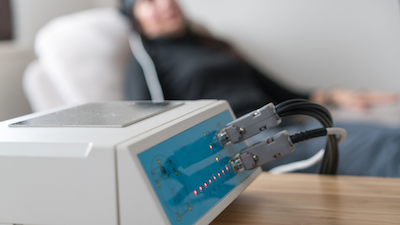An Introductory Guide To Biofeedback Techniques For Mental Health

It is not uncommon nowadays for someone to be familiar with mental health disorders such as depression and anxiety. Often, without the skills and soothing techniques when experiencing these emotions. In severe cases, these health issues can even lead to addiction. If this sounds like you, then biofeedback is the complementary therapy you may need. Biofeedback pairs great in an active mental health treatment of medications and talk therapy. As well, giving skills to carry on after the fact.
Here is the need-to-know about what regulatory techniques you may encounter during your sessions.
Intro to Biofeedback
Biofeedback is a therapy method that utilizes what therapists know about the relationship between psychology and physiology. During your visit, the therapist will hook up a machine for monitoring your body. The monitoring system used depends on which emotion is needing practice regulating. For example, they may monitor body temperature, heart rate, breathing rate, or blood pressure.
With the information received during these monitoring sessions, you can begin to be more in tune with your body and how it responds to particular stressors. Your therapist will work with you to identify target ranges that are a suitable resting point, as well as how to get there.
Biofeedback Techniques
There are a handful of different ways your therapist may have you practicing emotion regulation. Many can even be brought home to your own peaceful space for a mindful practice.
It’s good to know what you are getting into before attending… especially if you’re someone who tends to have anxiety around new experiences!
Breathing
One of the best ways to calm the nervous system is through breathing. Specifically, intentional and controlled breathing, rather than a fast pace like during hyperventilation.
Biofeedback monitoring for your breath would be for someone who experiences panic attacks. Where if they can learn to gain a stable breathing pattern, a sense of control can be returned.
There is a number of regulating techniques that your therapist may teach you. A common one is the 4-7-8 breath. You may need to work your way up to it, but the idea is a breathing ratio of a count of 4 for your breath in, hold for a count of 7, and release for 8.
This greatly slows your breathing, which deactivates the “fight or flight” response your body is experiencing and causing you to breath rapidly as if needing to run from danger.
Blood Pressure
By actively watching your blood pressure, your therapist can help you identify what triggers raise or lower your pressure. A spiked blood pressure is usually the result of stress which can be a side effect of anxiety or depression.
During these sessions you will create your own personal walk-through of affirming visuals. With the ability of watching your physiological response, you and your therapist can accurately identify which visuals create a relaxing effect within your brain. When out of session, you know you can return to these visuals (either mentally or physically like a photo) whenever under stress or feeling down.
Brain Waves
With tougher mental health situations such as addiction, a biofeedback therapy that focuses on brainwaves has the potential to help. This way the client and therapist can identify which out factors are making particular parts of the brain light up. This knowledge can help identify root causes to addictive behavior. As well, helping the client avoid what may create cravings for them.
After your sessions, keep in mind the things that “repulse” your brain activity. So when cravings are strong, you know how to soothe them and potentially avoid an incident or relapse.
Summary
This is a true mind-over-matter practice that requires dedication and practice. With the desire to improve and encouragement from your therapy team, you’ll be sure see positive results and learn lots about your own inner workings.


Leave a Reply
You must be logged in to post a comment.